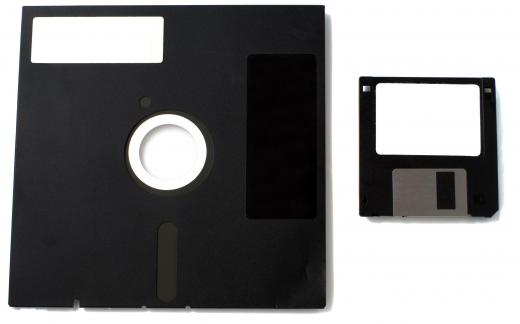At EasyTechJunkie, we're committed to delivering accurate, trustworthy information. Our expert-authored content is rigorously fact-checked and sourced from credible authorities. Discover how we uphold the highest standards in providing you with reliable knowledge.
What is a BIOS Jumper?
A basic input/output system (BIOS) jumper is a small device used to configure specific settings within the BIOS of a computer. The jumper is attached to a series of metal pins on a computer motherboard, which completes an electrical circuit and configures the appropriate setting. A BIOS jumper can be used in cases of a lost BIOS password or a corrupted BIOS update.
BIOS software is stored on a computer’s motherboard, and it runs when the computer is first turned on. This software loads an operating system and controls certain hardware settings. The BIOS can be updated, and most types of BIOS software can be protected by a password.
A BIOS jumper can be found inside most computers. The jumper itself is made of conductive material such as metal, and it usually is covered in a plastic coating. During normal operations, the jumper remains in its factory-set position.

If a user has forgotten the BIOS password, a BIOS jumper can be used to reset it. The physical location of the jumper varies depending on the motherboard, but it usually is found near a flat, round battery. It’s best for users to refer to the motherboard’s manual for the location, because it will often include a helpful picture or diagram.
In order to reset the BIOS, the jumper must be removed from its normal position and placed into the reset or clear position. Some motherboards will label the position. Common labels include CLR for "clear", PWRD for "password", RESET or some combination of these phrases. Again, the motherboard's manual frequently will contain pictures or diagrams of the different jumper positions.
The small size of a BIOS jumper means that it can be tricky to manipulate. Many users prefer to use a pair of pliers or tweezers to move the jumper. A computer always should be turned off and unplugged when one is working with internal components.
A BIOS jumper also might have a position for something called BIOS recovery mode. This is useful if an update made the computer unable to boot. In some cases, this requires recovery software loaded on a floppy disk, compact disc or flash drive.

Some motherboards also implement security features to prevent malicious software from modifying the BIOS. These features require a BIOS jumper to be set to a different position before the BIOS can be updated. The jumper must be moved back into its original position after the update is applied.
AS FEATURED ON:
AS FEATURED ON:













Discussion Comments
@SkyWhisperer - I added some new components to my computer that messed up my BIOS. That was the only time that I have ever had to reset it.
I had a friend who helped me build the computer show me where the jumper settings were and how to reset them. Everything worked normally after that; so yes, it was a life saver, but in general you shouldn’t need to do much with your BIOS.
@NathanG - I rarely mess with the BIOS either, but that doesn’t mean you shouldn’t become familiar with it. It can be a life saver in some situations.
The only time I’ve had to deal with it was when I needed to change the boot sequence for the computer. This can happen when the computer crashes for example and the computer can no longer load the operating system off the hard disk.
I can go into the BIOS and have it boot off a floppy disk or a CD ROM if that’s functioning properly and is available.
I’ve never had to reset the BIOS however. Then again, I get a new computer every two to three years, so maybe I just don’t hold on to them long enough to have to worry about that.
@David09 - I’ve read the same thing, but I have never done any BIOS updates. For that matter, I rarely even get into the BIOS unless I am in safe mode or something like that.
Something weird would have to happen for me to start messing with my BIOS settings. The article talks about passwords but I don’t even set passwords for the BIOS either.
From what you’re describing, I would check with your monitor’s software driver first. Download the latest driver for your monitor from the company’s website. See if that fixes the problem.
If it doesn’t, I would start looking at RAM. You can find programs on the Internet that will run checks of your RAM to make sure that everything is functioning properly.
Lastly, I would run a virus scanner and see if that resolves it. If all else fails, go ahead and reset the BIOS like the article says, but again, that’s the last resort.
My computer has been behaving erratically for quite some time. Someone suggested that I do a BIOS update or reset my BIOS.
I am not sure if that is the correct advice however, but I’m not expert enough to diagnose the problem myself. What’s happening is that sometimes I get horizontal or vertical lines streaking across my monitor.
It happens kind of randomly. I turn my monitor on and off and it seems to fix the problem for awhile but after about twenty minutes or so it starts up again.
I’ve read on the Internet people talking about making sure that you update your BIOS from time to time. Does anyone know if that would fix the problem?
Post your comments